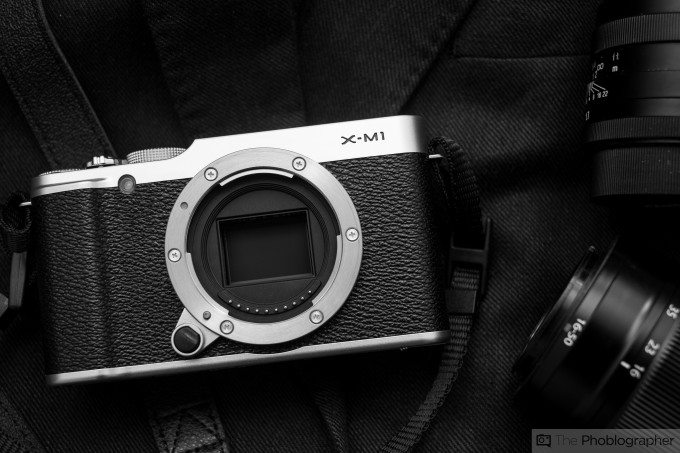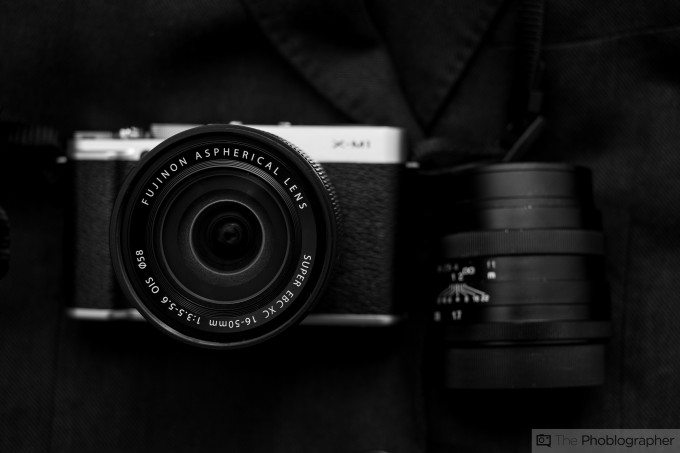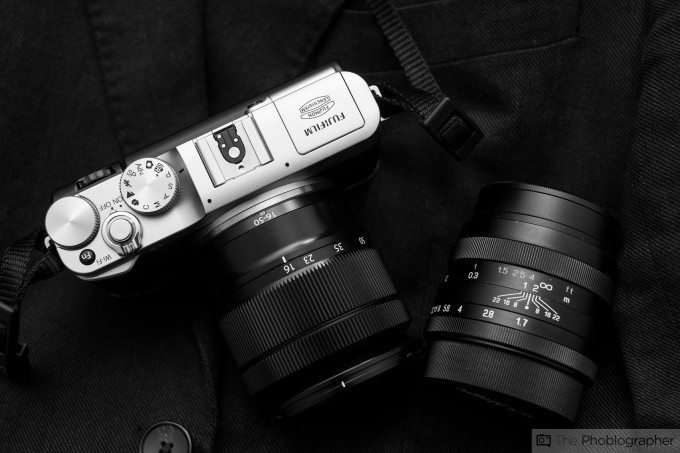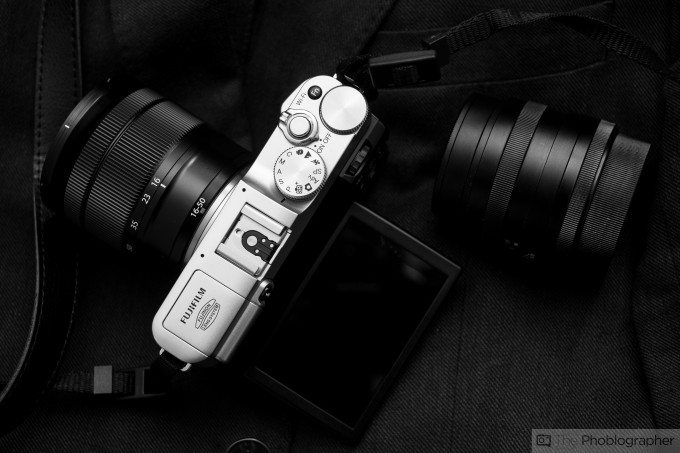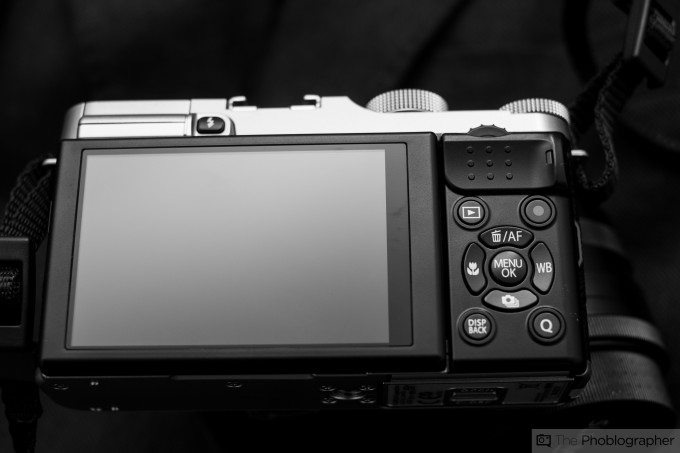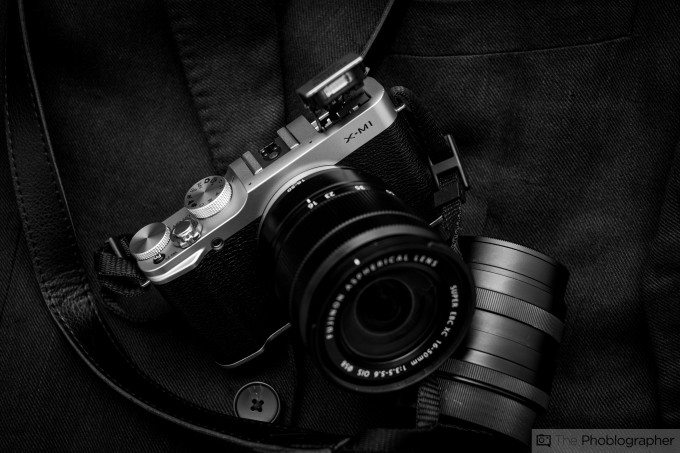Fujifilm’s XM1 is targeted at the user that wants Fujifilm’s image quality, but can’t reach the higher fruit that is the X-E1 and X Pro 1. This audience is the entry level mirrorless camera user–and certain things about the XM1 hammer this fact home. For example, it is kitted with the 16-50mm f3.5-5.6 lens which has no aperture ring in order to make it simpler for entry level users to operate it. Instead, the XM1 emphasizes the use of two dials to set up exposures.
The camera also deviates from its higher end siblings in that it forgoes the use of a viewfinder of any sort and instead relies on its tilting LCD screen.
Fujifilm has already proven itself in terms of image quality and having stylish good looks. But can they really court over a crowd that asks, “Canon or Nikon” before anything else?
Gear Used
We’re using the Fujifilm XM1 with the 16-50mm f3.5-5.6 kit lens, 27mm f2.8 pancake lens, 35mm f1.4 R, and the SLR Magic 23mm f1.7.
Tech Specs
Specs taken from the B&H Photo listing of the camera
| AV Recording | |
|---|---|
| Video Recording | Yes, NTSC/PAL |
| Resolution | 1920 x 1080: 30 fps 1280 x 720: 30 fps |
| Aspect Ratio | 16:9 |
| Video Clip Length | Up to 27 Min |
| Audio Recording | Built-in Mic: With Video, Stereo, |
| Focus Control | |
|---|---|
| Focus Type | Auto & Manual |
| Focus Mode | Single-servo AF (S), Continuous-servo AF (C), Manual Focus (M) |
| Autofocus Points | 49 |
| Viewfinder/Display | |
|---|---|
| Display Screen | 3″ Rear Screen Tilting Live Preview LCD (920,000) |
| Screen Coverage | 100% |
| Live View | Yes |
| Power | |
|---|---|
| Battery | 1x NP-W126 Rechargeable Lithium-Ion Battery Pack |
| Operating/Storage Temperature | Operating 32 to 104°F (0 to 40°C) Humidity: 10 – 80% |
| Physical | |
|---|---|
| Dimensions (WxHxD) | 4.6 x 2.6 x 1.5″ / 11.7 x 6.6 x 3.8 cm |
| Weight | 9.88 oz / 280 g without battery and card |
Ergonomics
Fujifilm’s XM1, once again, is keeping in mind the entry level audience. And with that in mind, the XM1 is devoid of any controls ont he front of the camera. Instead, you’ll see a textured grippy area and the XM1 branding.
Oh right, and there is also the lens release.
Once you check out the top of the camera, you start to see some more controls. These controls are the pop-up flash, hot shoe, mode dial, shutter speed, Function button, on/off switch around the shutter release, and the exposure dials.
Those exposure dials are placed in such a way that it makes shooting from the hip quite simple. This is also because the LCD screen tilts upward.
The back of the camera has very little in terms of controls: there is the pop-up flash button, playback, record, AF, macro, white balance and more.
Interestingly enough, one would think that this camera would have a touch screen. But alas, it doesn’t.
Build Quality
The XM1 doesn’t feel cheap, but it also doesn’t feel incredibly rugged. For what it’s worth, though, it’s the best darn feeling entry level mirrorless camera that we’ve held so far. So in this regard, one is surely getting what they paid for.
Walking around with the camera is a joy as it is extremely light and not too small but also not too large.
Ease of Use
So far, we’ve put the camera in push-here dummy mode: ie. Program auto. Pointing and shooting with it is quite fun, though out of the box it doesn’t have any sort of image review functionality and you instead need to turn this on.
Autofocus
So far we’ve been testing the 16-50mm f3.5-5.6 with the camera, and it seems to be snappier to focus than Fujifilm’s 35mm f1.4 R. We’re surely quite shocked by this as the 35mm has had lots of firmware updates so far.
We will be doing more in depth testing with the camera’s autofocusing, but here’s a very quick and informal test.
Image Quality
At the moment of publication, Lightroom 5 doesn’t support the XM1’s RAW files. But here are some JPEG conversions in camera.
First Impressions
So far, we’re extremely impressed with the Fujifilm XM1’s image quality and build quality for what you’re getting. As it stands though, it is the slowest focusing entry level mirrorless camera on the market. Sony, Olympus, Panasonic and Samsung all have cameras that focus faster than this.
Obviously though, AF speed isn’t everything. And we’ll explore more in our full review.
Please Support The Phoblographer
We love to bring you guys the latest and greatest news and gear related stuff. However, we can’t keep doing that unless we have your continued support. If you would like to purchase any of the items mentioned, please do so by clicking our links first and then purchasing the items as we then get a small portion of the sale to help run the website.


